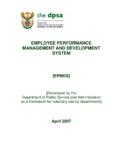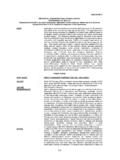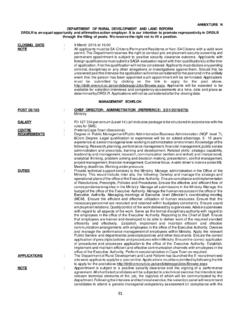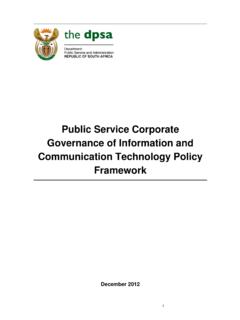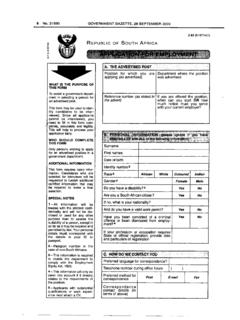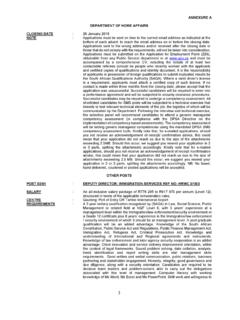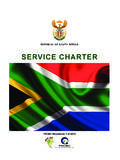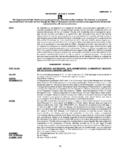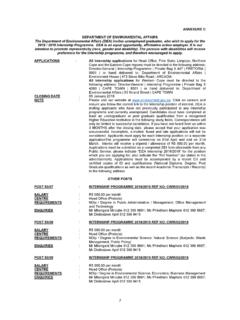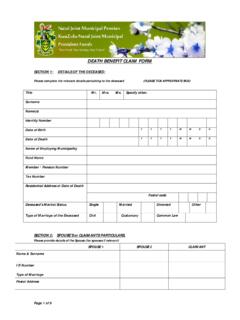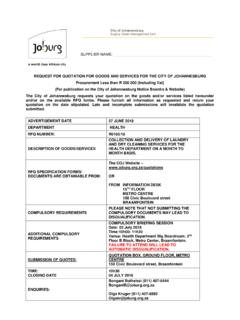Transcription of INVESTIGATION MANUAL FRAUD AND …
1 INVESTIGATION MANUAL . FRAUD AND corruption control . UNIT. RISK MANAGEMENT STRATEGIES. 1. 1. INTRODUCTION. The Office of the Premier has in line with treasury regulations for departments, trading entities and constitutional institutions issued in terms of the Public Finance Management Act 1999, established the FRAUD and corruption control Unit to deal with FRAUD and corruption within the provincial government. The FRAUD and corruption control Unit's core functions were adopted from the Provincial FRAUD and corruption Prevention Plan and Strategy, which is based on the following pillars: INVESTIGATION of reported and potential FRAUD and corruption incidents. Prevention of FRAUD and corruption Education and Awareness on prevention and eradication of FRAUD and corruption 2.
2 PURPOSE. The purpose of the FRAUD and corruption control Unit is to promote integrity and accountability through pro-active and re-active anti- corruption and FRAUD prevention measures. 3. OBJECTIVES. The objectives of the Unit are: To provide and maintain a working environment that will effectively manage risks of FRAUD and corruption incidents. To secure transparency, accountability and sound management of revenue, expenditure, assets and liabilities of the government. To provide the facilities and create a conducive situation in a management system where INVESTIGATION of FRAUD and corruption incidents takes place with a view to minimise FRAUD and corruption . 2. 4. MANDATE AND SCOPE.
3 The Unit's scope is only limited to all provincial departments and investigations from other stakeholders can only be undertaken by request from the authorities or management of that particular institution. INVESTIGATION MANUAL . INVESTIGATION OF REPORTED AND POTENTIAL FRAUD . AND corruption INCIDENTS. 1. PROCEDURE FOR REGISTRATION AND FILING OF. COMPLAINTS. Incidents of FRAUD and corruption may be reported by any of the following means: Toll Free Hotline Fax line Personal visits Letters A reported complaint must be registered on a Registration book, Complaint Form (Annexure A) and also allocated a Case number . Once the matter is registered a Main File thereof must be opened on the system (Computer) and also on the filing cabinet according to a department.
4 A printout of the complaint from the system must also be filed on the Main file. All correspondences pertaining to the reported case must be filed within that particular file. The Main File is sent to the Project /Case Manager for allocation before the end of a working day. 2. ASSESSMENT AND ALLOCATION OF INVESTIGATIONS. The Project /Case Manager must assess the reported incident, classify the case and determine the course of action guided by the List of Classification of Cases (Annexure B). After classification of a case a Project Status Form should be completed and filed in the main file (Annexure C). If the matter is to be referred to a department and external stakeholders a Memo should be drafted within two days and sent to the relevant stakeholder and a copy thereof must be filed in the Main File.
5 If the matter is to be investigated an Instruction Sheet (Annexure D) should be used for allocating a case to an Investigator and also indicating the target date and a copy thereof should be filed in the Main File. 3. An INVESTIGATION must be completed and a report submitted within five (5). working days from the date of allocation, however on certain instances the type of the case and the scope thereof will dictate on the set standard. On an instance were an Investigator has more than two (2) cases that he or she is investigating, cases should be prioritised according to the following criteria: If the request to investigate is from the authorities, eg: Premier and MEC and Management, eg: Director General, HOD etc.
6 The case must be given priority. 3. EXTRA ORDINARY REQUEST FOR INVESTIGATION . Request for INVESTIGATION from other stakeholders, eg: Municipality which does not fall under the Unit's scope must be in writing. 4. INVESTIGATION . PLANNING. An Investigator must upon receiving an instruction to investigate opens an Investigator file and compile an INVESTIGATION Plan (Annexure E) of which the plan must be submitted to the Project / Case Manager before an INVESTIGATION can commence. The Project /Case Manager must review the Plan, make corrections or inputs where it is necessary and communicate such inputs with the investigator and thereafter approves the Plan. No INVESTIGATION must commence before approval of the Plan.
7 When compiling an INVESTIGATION Plan an Investigator must amongst other cover the following issues: Establish the sections, SBU's or Directorate of the Department where the INVESTIGATION should be conducted/ focused, eg: Finance, Procurement, Human Resource, etc. Establish the names and functional responsibilities of those to be interviewed. The records, archives, computers tapes and personal records that should be collected. Make a list of evidence or information that is required but beyond the powers of an investigating official to obtain, eg: bank statements, paid cheques, etc. Draw up flow chart of internal control system and document trail. Establish what are the normal procedures.
8 Establish the period to be investigated. 4. INFORMATION GATHERING/ COLLECTION. Gather all identified and required documentary evidence that reflects the transaction flow of the entire system for the whole of the identified period of INVESTIGATION . The Investigator should use the Generic Document Request Letter (Annexure F) when requesting for documents. Use only one person to gather documentary evidence if possible. Working copies of all uplifted documentary evidence must be made. The originals should be locked away in a safe place. No marks whatsoever must be made on any original document. An index of documents uplifted, which not only lists these documents, but also explains the nature of each, should be compiled.
9 Any computer evidence should be copied on separate disks by the person normally responsible for operating the computer or the system administrator. If that person happens to be a suspect then copies must be made by any other computer literate person in the presence of the suspect. The copied disks should be sealed in the suspect's presence and safely stored. Hard copy of the information should be printed and an affidavit obtained from the computer operator or the system administrator that the printed copy is a true copy of the information stored in the identified and sealed disk. INTERVIEWING GUIDELINES. The purpose of interviewing someone is to obtain information. In the nature of INVESTIGATION this will be one sided, in that information will be given to the subject unless it is necessary for the purpose of the interview.
10 The subject must be briefly informed of the reasons for the interview without disclosing any sensitive facts such as that criminal offences are suspected, or that certain persons are suspected, etc. The subject must also be requested not to speak to any person about the interview or tell anyone what he was asked. He or she must be informed that if anyone insists on knowing what was asked, this person must be reported to the Investigating Officer. The subject should be informed (If he or she is definitely not a suspect) that he or she has nothing to worry and that the interview is being conducted to try to establish the correct systems, facts, occurrences, etc. that took place in the recent past.
